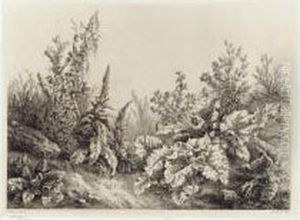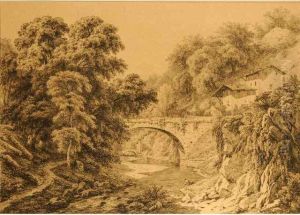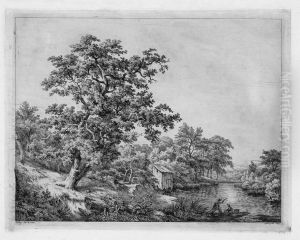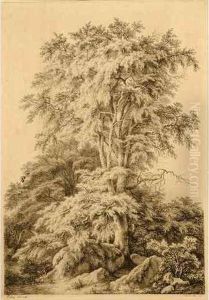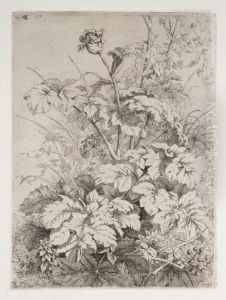Eugene S. Blery Paintings
Eugène S. Bléry was a French artist born in 1805, primarily known for his contributions to etching and engraving, which played a significant role in the 19th-century French art scene. His full name, Eugène-Simon Bléry, reflects the era's tradition of using hyphenated first names. He embarked on his artistic journey with a focus on landscape etching, capturing the French countryside's essence with a meticulous and delicate touch that was characteristic of his work throughout his career.
Bléry's art was deeply influenced by the Romantic movement, which emphasized emotion and individualism as well as glorification of the past and nature. His landscapes often depicted serene rural settings, imbued with a sense of tranquility and timeless beauty. He was adept at using the etching medium to bring out the textures and contrasts of nature, from the delicate foliage of trees to the ruggedness of rocky terrains. This ability to capture the nuanced beauty of the natural world won him accolades and recognition among his contemporaries.
Despite the prominence of painting during his time, Bléry remained committed to etching, a testament to his dedication to the craft and his belief in its potential to convey the sublime beauty of nature. He was a member of the Société des Aquafortistes, a group of artists who were pivotal in the revival of etching as a respected art form in France. Through his participation in this group, Bléry contributed to elevating etching to a level of artistic expression that rivaled painting, influencing the trajectory of French art.
Bléry's works were exhibited in various salons and galleries, where they received critical acclaim for their technical precision and artistic beauty. His etchings are characterized by a fine attention to detail and a masterful use of line, which allowed him to achieve a remarkable depth and realism. Despite the widespread recognition of his landscapes, Bléry also explored other subjects, including architectural studies and portraiture, though these remained secondary to his primary focus on nature.
Eugène S. Bléry passed away in 1887, leaving behind a legacy as a master etcher whose work continues to be celebrated for its contribution to the art of etching and its representation of the French landscape. His dedication to his craft and his ability to capture the sublime in the everyday have ensured his place in the annals of art history as a key figure in the 19th-century French art scene.
